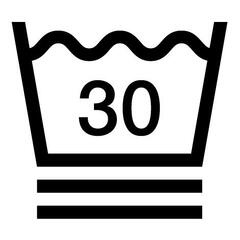NABAIJI
Ref.
8577308
2973643
Women's Open Water Swimming 2.5/2 mm Glideskin Neoprene Wetsuit OWS 500
€160.00
Tax included
Store Availability
Store Availability
Our design teams developed this open water swimming wetsuit for swimming in temperate water, while optimising its glide and buoyancy.
BENEFITS

Easy dressing
The back zip and super-stretchy component make it easy to put on.
Freedom of movement
Turn your shoulders freely thanks to the 2 mm neoprene on the armsTECHNICAL INFORMATIONS
Recommendations for use:
To prevent chafing around the neck and other areas liable to friction, apply Vaseline or a mixture of 50% Vaseline and 50% lanolin.
Fitting advice:
The Glide-Skin component used in this wetsuit is very flexible and stretchy, but also more fragile. When putting it on, do not use your fingernails and do not pull too hard. Put your arms and legs in gradually.
Component
Arms: 2 mm GLIDE SKIN neoprene
Chest, back and legs: 2.5 mm GLIDE SKIN neoprene
FLATLOCK seams: not waterproof
Chest, back and legs: 2.5 mm GLIDE SKIN neoprene
FLATLOCK seams: not waterproof
What are the different types of neoprene: standard and glideskin?
Neoprene is made up of 3 layers:
- Inner layer: fabric.
- Middle layer: foam.
- Outer layer: standard or glideskin fabric.
Standard neoprene has a woven fabric outer layer. This material is very tough but soaks up water and is more difficult to repair.
Glideskin neoprene has a polymer outer layer. This has the benefit of being more hydrodynamic and also waterproof. It is more fragile but is easily repaired with neoprene glue.
- Inner layer: fabric.
- Middle layer: foam.
- Outer layer: standard or glideskin fabric.
Standard neoprene has a woven fabric outer layer. This material is very tough but soaks up water and is more difficult to repair.
Glideskin neoprene has a polymer outer layer. This has the benefit of being more hydrodynamic and also waterproof. It is more fragile but is easily repaired with neoprene glue.
What is the difference between a surfing wetsuit and an open water swimming wetsuit?
Surfing wetsuits are made from standard neoprene, with a woven fabric outer layer. This material is very tough but soaks up water. It is suitable for surfing.
Open water swimming wetsuits are made partly or entirely from glideskin neoprene. This waterproof material is more hydrodynamic. It is also more fragile. Open water swimming wetsuits are therefore strictly designed for the practice of swimming
Open water swimming wetsuits are made partly or entirely from glideskin neoprene. This waterproof material is more hydrodynamic. It is also more fragile. Open water swimming wetsuits are therefore strictly designed for the practice of swimming
I feel the muscular effort differently when wearing a neoprene wetsuit. Is this normal?
If you’re enjoying your first open-water sessions with a wetsuit, it's completely normal to feel it more or differently in your muscles. This is because the sleeves offer added flotation for your arms, and so you have to use “extra” strength to plunge your arm into the water. This sensation will ease off and disappear after a few sessions.
Why is it so difficult to get into a wetsuit?
Getting into a neoprene wetsuit may seem like mission impossible, especially for those who have never used one. Neoprene wetsuits need to be a tight fit, as this is what prevents water from getting in. If the wetsuit is too big, swimmers will be more exposed to the cold, as well as to skin irritation as the wetsuit will move over the course of their session.
composition
composition
Foam: 100.0% Rubber; Main fabric - Outer layer: 100.0% Polyurethane; Main fabric - Inner layer: 14.0% Elastane, 86.0% Polyamide
Tips for storage and maintenance
 MAXIMUM WASH TEMPERATURE 95°C. NORMAL TREATMENT.
MAXIMUM WASH TEMPERATURE 95°C. NORMAL TREATMENT.
 MAXIMUM WASH TEMPERATURE OF 30°C. VERY MODERATE TREATMENT.
MAXIMUM WASH TEMPERATURE OF 30°C. VERY MODERATE TREATMENT.
 IRON AT A MAXIMUM SOLEPLATE TEMPERATURE OF 150°C.
IRON AT A MAXIMUM SOLEPLATE TEMPERATURE OF 150°C.
 MAXIMUM WASH TEMPERATURE 70°C. NORMAL TREATMENT.
MAXIMUM WASH TEMPERATURE 70°C. NORMAL TREATMENT.
 IRONING AT A MAXIMUM IRON SOLEPLATE TEMPERATURE OF 200°C.
IRONING AT A MAXIMUM IRON SOLEPLATE TEMPERATURE OF 200°C.
Storage tips
Store the open-water swimming wetsuit in a dry place.
TESTS AND WARRANTY
Warranty
2 Years